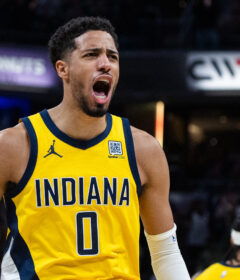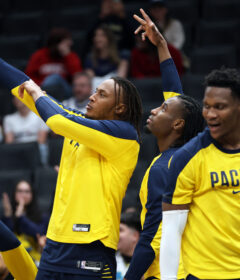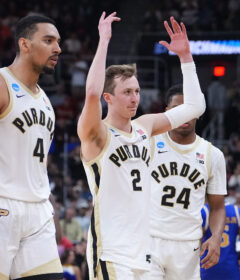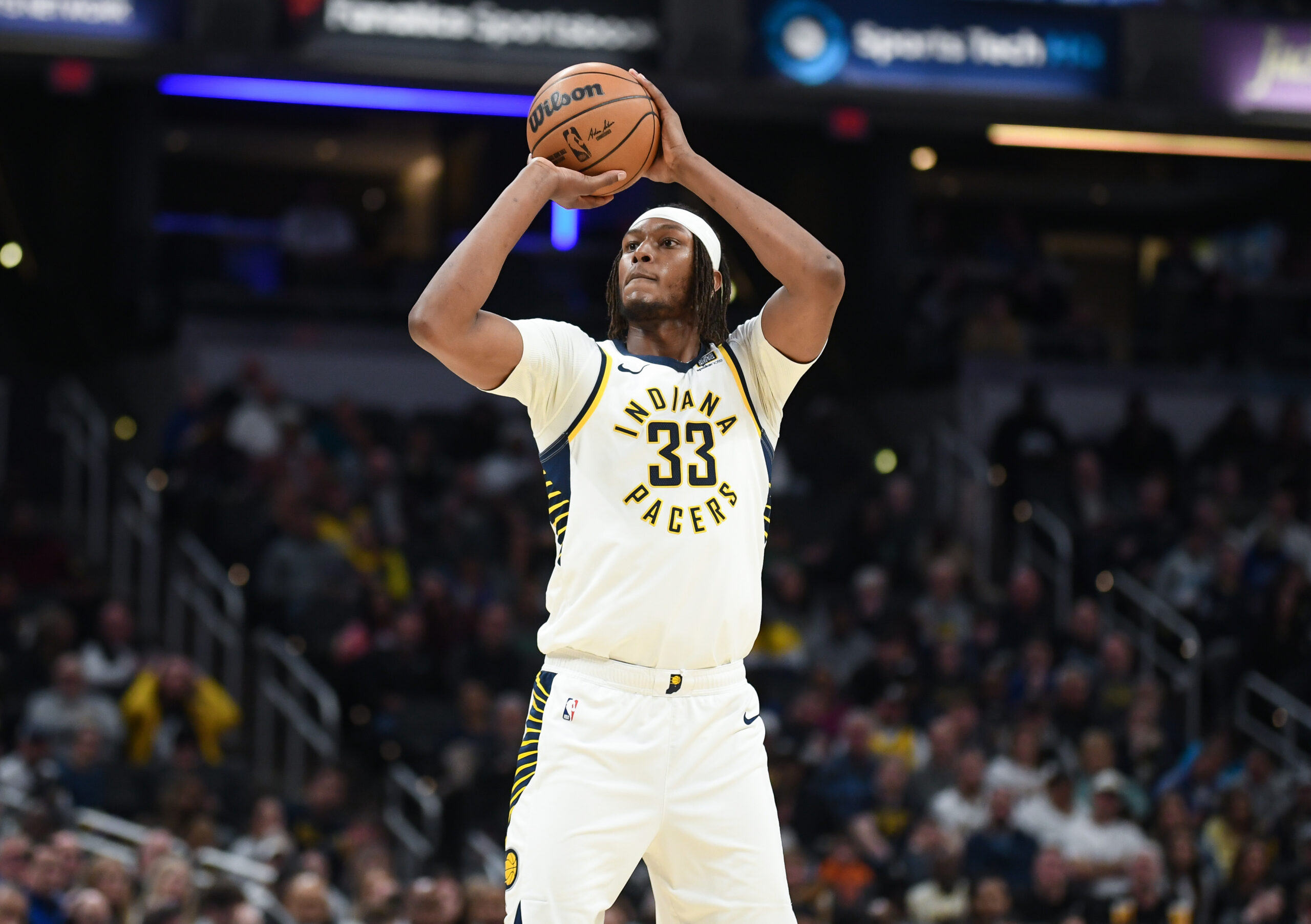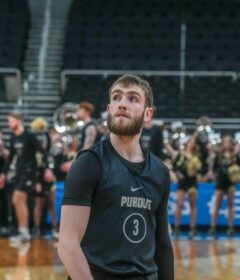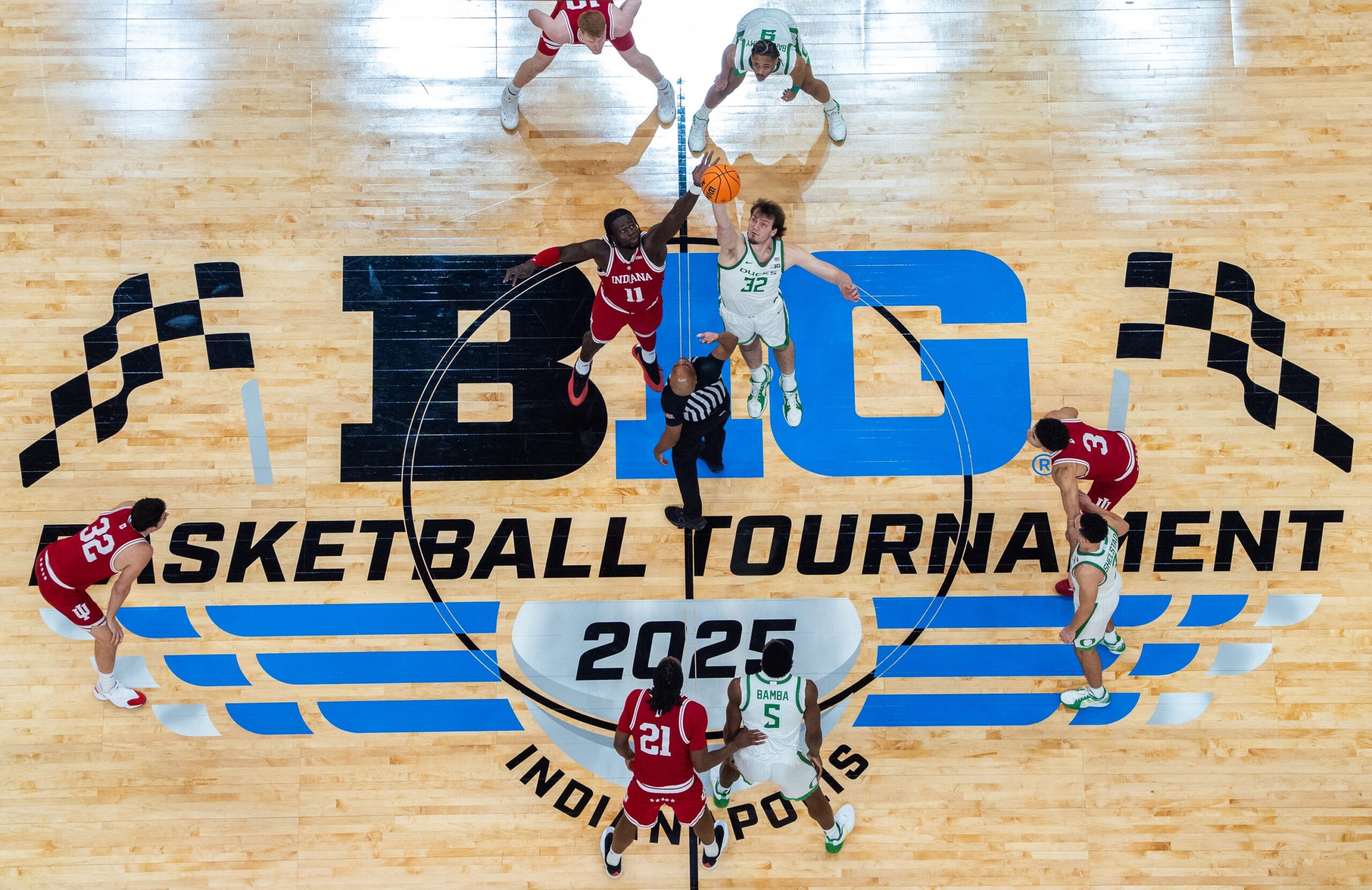Brunt: Looking back at the keys to the Indiana-Purdue game

By CLIFF BRUNT
ISL Editor
WEST LAFAYETTE, Ind. — A lot of sports writers get criticized for not going back over their predictions and bold statements because by not doing so, they never seem wrong. Well, I make mistakes, and I have no shame in going over them.
I didn’t officially make a prediction for this game. I thought Purdue had the tools to upset IU yesterday, but figured the Hoosiers would win a close one. Instead, the Hoosiers smashed Purdue 97-60 in the worst beatdown in the series in two decades.
I’m going to go over each of the 10 things I said needed to happen for Purdue to pull the upset, then break down what actually happened. You can look at the breakdown below the ESPN video highlights (or lowlights, depending on what color you wear).

10 ways Purdue could upset IU:
1. Purdue takes advantage of Jordan Hulls’ defensive deficiencies.
Pregame:
Indiana coach Tom Crean said at Sunday’s press conference after the Michigan State game that the first part of his defensive game plan is always to figure out who he’s going to put Hulls on. He tries to find the best matchup for his undersized guard, then he builds from there. Purdue makes that a difficult decision because of its balance. Hulls can’t keep up with either Terone or Ronnie Johnson, and D.J. Byrd would shoot right over him. A likely matchup is Byrd because of speed. Whomever Hulls is guarding will have to have a big game to make up for some of Purdue’s disadvantages. I think Byrd will be that guy.
What actually happened:
Hulls indeed was matched up with Byrd, but Byrd picked up his second foul with 15:47 left in the first half, affecting his team’s rotation. Purdue’s ball movement was so poor that Byrd was never comfortable. He was hesitant and put the ball on the floor too much. He was not aggressive and finished with four points on 1-for-4 shooting.
2. Purdue dictates tempo and slows the game down.
Pregame:
Wisconsin wrote the book on how to beat Indiana – slow the pace and limit the Hoosiers’ threes and transition baskets. The Badgers held the Hoosiers to three fast-break points and three 3-pointers. Few teams can execute that game plan, but Purdue is one that can. Purdue is fast at most positions and can get back defensively. Even 7-foot center A.J. Hammons is relatively mobile. There won’t be as many runouts as Indiana is used to getting because Purdue generally gets back on defense.
What actually happened:
Purdue let Indiana control the pace. It was a shocking development given Hammons’ matchup and the blueprint Wisconsin gave the Big Ten. The Boilermakers tried at times to slow the game down, but they weren’t consistent about it. Indiana killed Purdue on the boards, allowing multiple transition opportunities that let the Hoosiers play the entire game in their comfort zone.
3. Ronnie Johnson outplays Yogi Ferrell.
Pregame:
A big part of Wisconsin’s win over Indiana was that point guard Traevon Jackson outplayed Ferrell. Purdue’s Ronnie Johnson is good enough to do the same. He’ll be one of the few players Ferrell sees this season who can match his quickness. Ronnie will need to stay in front of Ferrell on defense and resist the temptation to get out of control and do too much on offense.
What actually happened:
Johnson played relatively well at times, but his teammates, other than Hammons, failed him. Johnson scored 13 points, but he took 16 shots. He actually took more shots than Hammons, which shows that Johnson is still struggling with shot selection and decision making. Purdue players not named Hammons and Ronnie Johnson made just 7 of 25 shots. Johnson had five assists and four turnovers. Ferrell scored 11 points and made 3 of 4 3-pointers in 19 minutes. Round one goes to Ferrell.
4. Indiana forgets about Cody Zeller.
Pregame:
This happens way too often. Indiana is so good at shooting threes that the Hoosiers forget they have the preseason national Player of the Year in the post. Zeller has scored a combined 11 points the past two games. He has not gotten established, therefore, other guys haven’t been as open. Indiana beat Michigan State with so-so production from Zeller because Victor Oladipo played out of his mind. Oladipo is a very good player, but he can’t get 21 points, seven rebounds and six steals every night like he did against Michigan State. The Hoosiers will need Zeller on Wednesday.
What actually happened:
Indiana established Zeller early. He had 13 points and nine rebounds at halftime and got Hammons into foul trouble. Zeller finished with 19 points and 11 rebounds. He did his part.
5. Hammons shows up.
Pregame:
I wrote on this site that Hammons was emerging as a star. I still believe that, even though his production has been down the past few games. He’s a good enough big to force Zeller out of his comfort zone. Zeller was virtually powerless when Michigan State’s 6-foot-9, 270-pound Derrick Nix set up shop down low on Sunday. Hammons is even bigger. Zeller is a great player, but he is a mobile forward who plays center because he’s taller than everyone else. Indiana simply does not have a good matchup for Hammons. If he stays out of foul trouble, basketball fans across America will know his name on Thursday morning.
What actually happened:
Boy, did Hammons show up. He scored 30 points on 10-for-14 shooting in 28 minutes and had numerous dunks. He did everything I always thought he could. I said in this article that he was emerging as a star.
His foul trouble, though, was critical. He committed his second foul four minutes into the game. IU led 7-6 at that point.
When he re-entered the game, IU led 22-17 with 10:13 left in the first half. Hammons committed his third foul with 4:17 left in the first half and the Boilermakers down 35-25. Indiana closed the half on a 12-2 run with Hammons on the bench.
So in those stretches Hammons was off the floor, IU outscored Purdue by 14 points.
As great as Hammons was, he also failed to dominate the boards. Indiana outrebounded Purdue 39-29 and had 18 offensive rebounds and 24 second-chance points. That’s way too many. Much of that is Hammons’ responsibility. So, though he was spectacular in many ways, he also showed he has growing up to do.
6. Jacob Lawson shows up.
Pregame:
Lawson is an ideal defender for Zeller and Watford because he has the length and athletic ability to bother them, but he is a bit of a liability on offense, so the Boilermakers have been playing Rapheal Davis more.
If the Boilermakers play Davis a lot, he’ll need to score to make up for the fact that Christian Watford is more aggressive than him near the basket. Watford has been criticized (by me at times) for not being the inside force he should be. He is improving in that area. Davis might be overmatched, especially on the boards, so Lawson’s minutes will be crucial. Donnie Hale may have to step up, too.
What actually happened:
Lawson played nine minutes and actually was a solid contributor. I have no issue with the way he played. Davis, however, completely vanished. As expected, he was completely overmatched against Watford defensively, but he went scoreless on the other end, which is unacceptable for a player who is starting because he can score. Watford scored 17 points and made 4 of 5 3-pointers while taking advantage of numerous lapses by Purdue’s defense. Hale went scoreless in 13 minutes. This position got completely dominated.
7. Indiana doesn’t play Will Sheehey enough.
Pregame:
The Hoosiers are funny about Sheehey’s minutes, which is strange because he’s one of the most versatile players in the Big Ten. The 6-foot-7 junior comes off the bench for Indiana; with all due respect to Terone Johnson, he’d probably be the leading scorer at Purdue. Sheehey eliminates the problem of having Hulls matched up with Byrd and would possibly force Purdue to consider going with Davis, Lawson and Hammons at the same time because Byrd would have all kinds of trouble with the more athletic Sheehey.
Sheehey went through a recent four-game stretch during which he scored 14 points, went scoreless twice and played fewer than 20 minutes twice. His past two games have been more normal – he scored 12 points in 24 minutes against Penn State and eight points in 23 minutes against Michigan State. If Sheehey plays starter minutes, Purdue could struggle to adjust.
What actually happened:
Sheehey played 18 minutes, but they were a killer 18 minutes. He had seven points and a career-high seven assists. This was another matchup Purdue had no answer for, and the Boilermakers are lucky he didn’t play more.
8. Tom Crean gets outcoached.
Pregame:
The consensus among the experts is that Crean lost the coaching battles in IU’s losses to Butler and Wisconsin. Purdue’s Matt Painter is certainly at the least in the conversation with the likes of Brad Stevens and Bo Ryan. Crean sometimes struggles to get his team to play a complete game. The Hoosiers get credit for their win over Michigan State, but here’s the reality: Indiana led Minnesota 52-29 at halftime and barely won; scored 27 points in the second half against Wisconsin and lost, was outscored by six points in the second half at Northwestern and struggled to pull away from Michigan State, even when Keith Appling, MSU’s top scorer, was in foul trouble. Indiana is very good, but not dominant.
What actually happened:
This was a masterful coaching job by Crean. His plan to attack Hammons early was ingenious because without Hammons, Purdue lost its biggest advantage. Hammons can’t help himself — he has to reach. He will learn, and hopefully for Purdue, he learned his lesson for good on Wednesday. Painter didn’t so much get outcoached as his players, especially Hammons and Byrd because of their early foul trouble, didn’t give him a chance to coach. This round definitely goes to Crean.
9. Purdue plays defense like it usually does.
Pregame:
You know the names. Zeller, Watford, Oladipo, Hulls, Ferrell, Sheehey. Though Indiana plays good defense, those guys are known because they light up the scoreboard. Purdue’s players don’t have the name recognition, but here’s what they are: part of one of the best defensive teams in the Big Ten. Purdue allows 63.9 points per game in Big Ten play, not spectacular. But the Boilermakers hold opponents to 39.1 percent shooting, similar to Indiana’s 39.0 mark. Purdue will need to improve its perimeter defense — the Boilermakers allow 38 percent shooting from 3-point range. But opponents have made just 123 of 311 shots inside the arc, just 39.5 percent. The Boilermakers lead the Big Ten in rebounding and are second in blocked shots. Purdue has the edge in a rough-and-tumble halfcourt game.
What actually happened:
This was one of the worst defensive performances I’ve seen from Purdue in eight years of covering the team. The Boilermakers allowed the Hoosiers to make 12 of 25 3-pointers and gave them second shots when they missed. Indiana scored consistently inside, something teams normally struggle with against Purdue, and that helped free up the Hoosiers’ outside shooters. This was not Purdue defense.
10. Indiana gets caught looking ahead.
Pregame:
It’s a weird thing to say about a rivalry game, but Indiana’s biggest game this week is Saturday against new No. 1 Michigan. Purdue is a bit of a nuisance on the schedule for the Hoosiers. Because there is not that much hype about Purdue and there won’t be quite the interest that normally surrounds the matchup because the Boilermakers are “down,” the Hoosiers could get caught sleepwalking their way through. They will never tell you that, but they are human, and it’s possible.
What actually happened:
The Hoosiers were completely focused on the task at hand, and that is a credit to Crean. Indiana played its most complete game of the season and takes momentum into its matchup with No. 1 Michigan.

